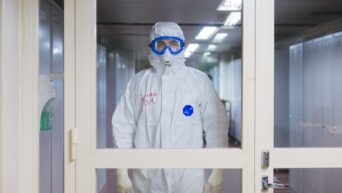Revolutionizing Aviation: Uncovering the Secrets of Bird Flight with Taxidermy Drones
Researchers at the New Mexico Institute of Mining and Technology in Socorro have devised a unique way to study flight: turning taxidermy birds into drones. The team, led by a mechanical engineering professor, Dr. Mostafa Hassanalian, found that traditional mechanical birds needed to provide the desired results. This led them to consider the use of preserved birds. “We came up with this idea that we can use … dead birds and make them [into] a drone,” said Hassanalian. “Everything is there … we do reverse engineering.”
These taxidermy bird drones are being tested in a specially designed cage at the university. By studying flocks’ formation and flight patterns, researchers hope to understand aviation better. “The taxidermy bird prototype flies for a maximum of 20 minutes, so the next stage is to work out how to make it fly longer and conduct tests in the wild among living birds,” Hassanalian said.
Using taxidermy bird drones provides a unique opportunity for researchers to study flight in a way that has not been possible before. By using preserved birds, they can study the flight patterns of no longer alive birds, providing valuable insight into how they fly and interact with each other. This knowledge can then be applied to the aviation industry, leading to the development of more efficient and safer aircraft.
Researchers in New Mexico are developing taxidermy bird drones in what could be an unconventional approach to wildlife monitoring pic.twitter.com/MeWWKGosCR
— Reuters Science News (@ReutersScience) April 14, 2023
While the taxidermy bird drones are still in the testing phase, they can potentially revolutionize how we study flight. By unlocking the secrets of bird flight, researchers can pave the way for a better future in aviation.































